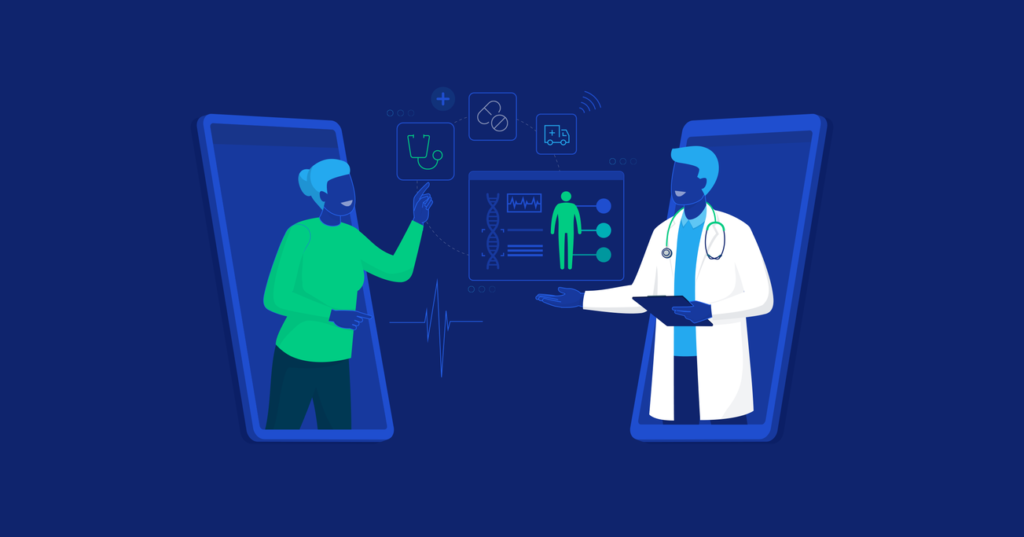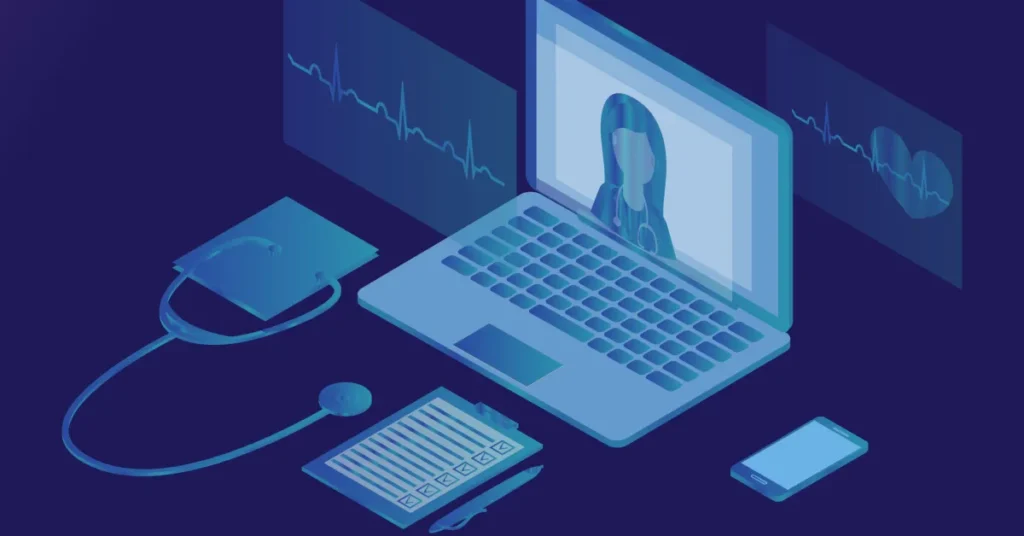Table of Contents
Preface to Telemedicine
Telemedicine, also known as telehealth, is the delivery of healthcare services through information and communication technology (ICT). It allows healthcare providers to diagnose, treat, and monitor patients remotely, often through video conferencing, phone calls, or online portals. This innovative approach has the potential to revolutionize healthcare by improving access, convenience, and affordability.

Scope of Telemedicine
This is vast and encompasses a wide range of healthcare services, including:
Teleconsultation : It is a form of telemedicine that involves remote consultations between healthcare providers and patients. It typically involves the use of video conferencing, phone calls, or online chat to deliver healthcare services. This allows patients to receive care from the comfort of their own homes, saving time and money on travel.
Remote Patient Monitoring (RPM): It is a healthcare technology that allows patients to monitor their health conditions from home. It involves using wearable devices or other sensors to collect health data, such as heart rate, blood pressure, blood sugar levels, and oxygen saturation. This data is then transmitted to healthcare providers for analysis and monitoring. RPM can help to improve patient outcomes, reduce hospitalizations, and enhance care coordination.
Tele psychiatry: It is the practice of providing mental health services through telecommunication technologies. It allows patients to receive psychiatric care from the comfort of their own homes, often using video conferencing or phone calls. This can be particularly beneficial for individuals in rural or underserved areas, as well as those with mobility limitations or social anxiety. Tele psychiatry can provide access to a wider range of mental health professionals and treatment options.
Tele emergency: This involves providing emergency medical care remotely. It can be used to triage patients, assess their condition, and provide medical advice until they can be transported to a healthcare facility. Tele emergency can be particularly useful in rural or remote areas where access to emergency medical services may be limited.
Functions
This enables healthcare providers to deliver healthcare services remotely. This involves:
- Facilitating communication: Allowing healthcare providers and patients to communicate effectively through video conferencing, phone calls, or online portals.
- Sharing medical information: Enabling the sharing of medical records, images, and other relevant data between healthcare providers.
- Remote patient monitoring: Collecting health data from patients at home and using it to monitor their conditions and adjust treatment plans as needed.
- Providing healthcare education: Delivering healthcare education and training to patients and healthcare providers remotely.
- Integrating with existing healthcare systems: Connecting with electronic health records (EHRs) and other healthcare systems to ensure seamless patient care.
- Ensuring data security: Protecting patient privacy and data confidentiality through encryption and other security measures.
Emerging features of telemedicine
Internet of Things (IoT)
- Wearable devices: IoT devices can continuously monitor patients’ vital signs and other health metrics.
- Remote patient monitoring: IoT sensors can collect data from patients’ homes and transmit it to healthcare providers.
Block chain Technology
- Secure data management: Blockchain can ensure the security and integrity of patient data.
- Interoperability: Blockchain can facilitate data sharing and interoperability between healthcare systems.
Telemedicine for Mental Health
- Virtual therapy sessions: Online therapy can provide access to mental health services for individuals in remote areas.
- AI-powered mental health tools: AI-powered chatbots and virtual assistants can offer support and resources for mental health conditions.
Telemedicine for Chronic Disease Management
- Remote monitoring and management: This can help patients with chronic diseases manage their conditions effectively.
- Personalized care plans: Healthcare providers can tailor treatment plans based on patient data and preferences.
Artificial Intelligence (AI) and Machine Learning (ML)
- AI-powered diagnosis: AI algorithms can analyse medical images, patient data, and symptoms to assist in diagnosis.
- Personalized treatment plans: ML models can tailor treatment plans based on individual patient data and preferences.
- Predictive analytics: AI can predict health risks and outcomes, allowing for proactive interventions.

What is Telemedicine concept in India?
In India is the delivery of healthcare services through information and communication technology (ICT). It allows healthcare providers to diagnose, treat, and monitor patients remotely, often through video conferencing, phone calls, or online portals. This is particularly beneficial in India’s vast and diverse landscape, where access to healthcare can be limited in rural areas.
The Indian government has been actively promoting this concept to improve healthcare access and quality, especially in remote regions. They have launched initiatives like the National Telemedicine Health Mission and established centers across the country.
Some of Key aspects:
Government initiatives: The government has established telemedicine centers and hubs to connect healthcare providers and patients.
Rural healthcare: It is being used to provide healthcare services to rural populations, where access to healthcare is limited.
Tele-education: Telemedicine is being used to train healthcare providers and educate patients
Is telemedicine legal in India?
ABSOLUTELY yes, it is legal in India. The Indian Medical Council (IMC) has issued guidelines for the practice of it, which outline the ethical and legal requirements for healthcare providers. These guidelines ensure that this is practiced in a safe and responsible manner.
What is the role of telemedicine in emergency care?
Telemedicine can be a lifesaver in emergency situations, especially in remote or underserved areas. It allows healthcare providers to assess patients’ conditions, provide medical advice, and coordinate emergency services, even when physical proximity is limited. This can help to reduce mortality rates and improve patient outcomes.
- Coordinating emergency services: Coordinating the response of emergency medical services and healthcare facilities.
- Improving access to care: Telemedicine can help to bridge the gap in access to emergency care, especially in rural or remote areas.
- Reducing mortality rates: By enabling early intervention and appropriate treatment, telemedicine can help to reduce mortality rates from emergencies.
Conclusion
Telemedicine is a promising solution that has the potential to improve healthcare access, quality, and affordability for millions of people around the world. It has emerged as a transformative force in healthcare, offering numerous benefits to patients, healthcare providers, and healthcare systems. By leveraging technology to deliver healthcare services remotely, telemedicine can improve access to care, enhance patient outcomes, and reduce costs.